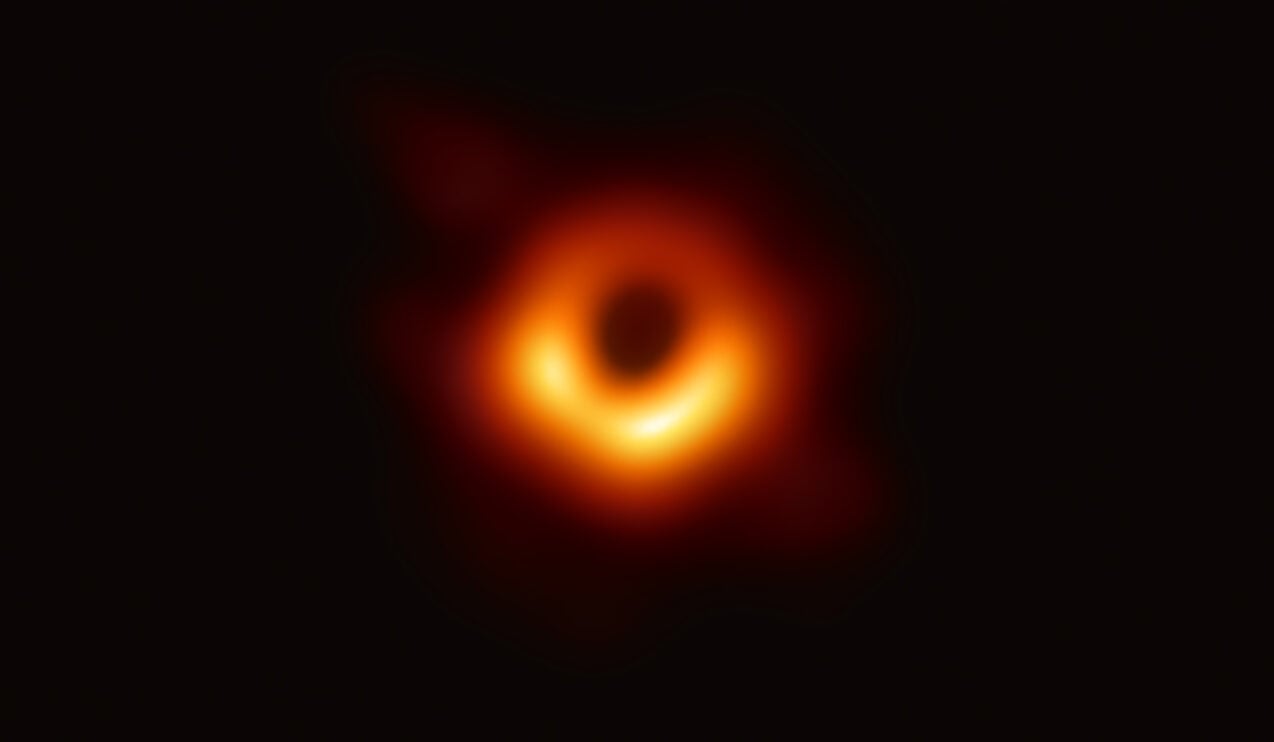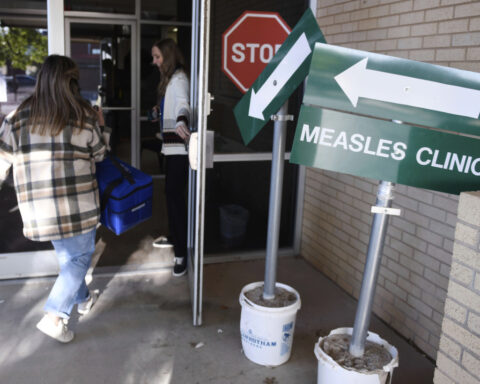Scientists have spotted rare gamma rays from the black hole at the center of galaxy M87. A research team reports that the burst is much bigger than anything seen from this black hole in the past ten years.
The energy burst, called a gamma-ray flare, spreads tens of millions of times wider than the black hole's edge. According to a new paper in Astronomy & Astrophysics, this finding helps scientists better understand how black holes work.
The burst lasted about three days and came from a small area in space, just under 15 billion miles wide. It shot out particles with much more energy than regular light.
"We want to know how these particles get so much energy near the black hole and in its jet of material," says Weidong Jin, who studies space at UCLA and helped write the paper. "The particles move almost as fast as light itself."
This same black hole made news in 2019 when scientists took its first-ever picture. M87 sits in a part of space called the Virgo constellation. Scientists keep watching it to learn more about how black holes behave.
More than 25 different space tools helped track this burst. These included NASA's space telescopes, such as Hubble, Fermi-LAT, NuSTAR, Chandra, and Swift. Three big ground telescopes, VERITAS, H.E.S.S., and MAGIC, also helped.
UCLA helped build VERITAS, which is located in Arizona. The university made parts that help the telescope read what it sees and computer programs that help sort through all the data.
Jin and his team looked at the burst, breaking down its light as if seeing all the colors in a rainbow. They found that the black hole's edge and its jet of material changed position, showing how the burst and the black hole work together.
"This black hole shoots out a jet of material that stretches thousands of light years into space," Jin says. "Our study helped us find where these high-energy bursts come from. This could help explain where space rays that hit Earth come from."
The burst happens because of how black holes pull in stuff around them. As things fall toward a black hole, they speed up and get hot. Some of this material shoots away from the black hole's top and bottom as strong magnetic fields push jets. This process isn't smooth, which can cause big bursts of energy.
These bursts give off gamma rays, which are like super-strong light. These rays can't get through Earth's air. But about 70 years ago, scientists found they could spot gamma rays by looking for other kinds of light they make when they hit Earth's air.
The research team gathered more data about this burst than anyone ever collected about Galaxy M87. This helps them understand how black holes make particles move so fast.
They used many different kinds of telescopes to watch the burst. Some looked for X-rays, while others watched for gamma rays of various strengths. By working together, these telescopes helped scientists learn new things about how black holes create such powerful bursts of energy.
The findings matter because they show how things work in the most extreme places in space. Black holes are some of the most powerful things we know about, and each discovery helps us understand them better.
Scientists think this kind of research might also help explain other space mysteries. For example, it could show where cosmic rays come from. These rays are particles from space that sometimes hit Earth, and scientists have wondered about them for many years.
The burst shows that black holes can surprise us even after we've studied them for years. As telescopes improve, scientists hope to learn more about how these strange objects work.
Related Articles:

 Trump has begun another trade war. Here's a timeline of how we got here
Trump has begun another trade war. Here's a timeline of how we got here
 Canada's leader laments lost friendship with US in town that sheltered stranded Americans after 9/11
Canada's leader laments lost friendship with US in town that sheltered stranded Americans after 9/11
 Chinese EV giant BYD's fourth-quarter profit leaps 73%
Chinese EV giant BYD's fourth-quarter profit leaps 73%
 You're an American in another land? Prepare to talk about the why and how of Trump 2.0
You're an American in another land? Prepare to talk about the why and how of Trump 2.0
 Chalk talk: Star power, top teams and No. 5 seeds headline the women's March Madness Sweet 16
Chalk talk: Star power, top teams and No. 5 seeds headline the women's March Madness Sweet 16
 Purdue returns to Sweet 16 with 76-62 win over McNeese in March Madness
Purdue returns to Sweet 16 with 76-62 win over McNeese in March Madness








